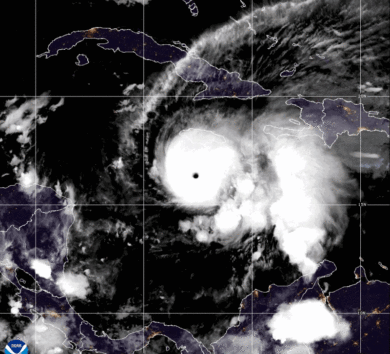

Durrant Pate/Contributor
While Latin America and the Caribbean has made progress in macroeconomic resiliency, a new World Bank study has found that growth remains inadequate to reduce poverty and create jobs.
The report, titled ‘Wired: Digital Connectivity for Inclusion and Growth,” which was released on Wednesday (October 4) highlighted that fiscal constraints limit necessary investments even though the LAC region has been enjoying macroeconomic resiliency over previous decades whilst navigated the multiple post-pandemic crises with relative success. The report cites as a beacon of hope, expanding digital connectivity, combined with complementary policies, which offers tremendous possibilities to create more dynamic and inclusive societies.
The report estimates that “gross domestic product (GDP) will grow by 2.0 per cent in 2023, slightly up from 1.4 per cent in previous projections, but still below that of all other regions in the world. Rates of 2.3 and 2.6 per cent are expected for 2024 and 2025. These rates, similar to the 2010s, are not enough to make much needed progress in inclusion and poverty reduction.”
According to the report, “LAC carried out well-grounded macroeconomic reforms over the past three decades, leading to increased resilience to shocks, such as the multiple post-pandemic crises of inflation, uncertainty from the Ukraine war, soft commodity prices and growing debt. Poverty and employment have generally returned to their pre-pandemic levels, and inflation, excluding Argentina and Venezuela, has fallen to a regional average of 4.4 per cent, below that of OECD countries.”

Assessing global context
Though improved from six months ago, the global context remains adverse, marked by high interest rates, low growth in advanced economies and China’s uncertain prospects. Governments, the report highlights will also continue to struggle with fiscal space.
While the debt to GDP ratio is estimated at 64 per cent, down from 67 per cent a year ago, it is still above the 2019 level of 57 per cent and high interest rates have increased the debt service burden.
Commenting on the report, LAC vice president at the World Bank, Carlos Felipe Jaramillo, says, “the region has proven mostly resilient to the several post-pandemic external shocks, but unfortunately growth remains anemic. Countries must urgently find ways to boost inclusion and growth, improve governance and build social consensus. Digital solutions can be part of the answer as they help complement structural reforms to increase productivity, improve services delivery for the population and support government efficiency. We see major opportunities for the region here.”

William Maloney, chief economist for Latin America and the Caribbean at the World Bank, remarked, “private and public investment in digital connectivity can stimulate new sectors and jobs, offer new areas of trade, and increase the efficiency, quality and inclusiveness of government programs ranging from education to agricultural extension in remote rural areas. However, digital connectivity is not a silver bullet for growth and can exacerbate existing social inequalities without complementary investments in skills, finance, and regulatory systems to realize the promise of digital technologies for all.”
Existing gaps and opportunities in digitalisation
To help Latin America and the Caribbean seize the advantages of the digital economy, while including the poorest and promoting better governance, the report outlines existing gaps and opportunities in digitalisation, such as:
· Infrastructure: Mobile internet access is widespread but presents a coverage gap (areas without a mobile broadband network) of seven per cent of the population (45 million people). Fixed internet is present in 74 per cent of urban households, but only in 42 per cent in rural areas. Quality is also an issue: 55 per cent of households that have some internet connectivity note low quality of services. Addressing these disparities requires a mix of technological and institutional innovations to facilitate internet access.

· Usage gaps: Some 38 per cent of the population (240 million people) lives in areas with internet coverage but chooses not to connect. Reasons for this include high cost of internet services, lack of awareness about the potential advantages of connectivity and unfamiliarity with digital platforms. To address these gaps, tackling affordability issues and expanding digital skills are key.
· Beyond access: Investing in complementary areas is essential to ensure inclusivity. Access to broadband alone is not enough. People need the tools and capabilities to seize the opportunities of the digital economy. Critical areas for action include strengthening digital and traditional human capital skills and managerial competences; ensuring the availability of financing; facilitating efficient government protocols and a supportive regulatory structure.
· Governance: Digital tools can make governments more responsive by easing transactions with citizens, improving the efficiency and quality of service provision, and promoting inclusivity. Reducing transaction costs particularly benefits more remote and disadvantaged segments of society. Employing digital networks and tools can help reduce the large share of GDP—as much as four per cent—lost in inefficiencies in public expenditures and spending leakages.






Comments